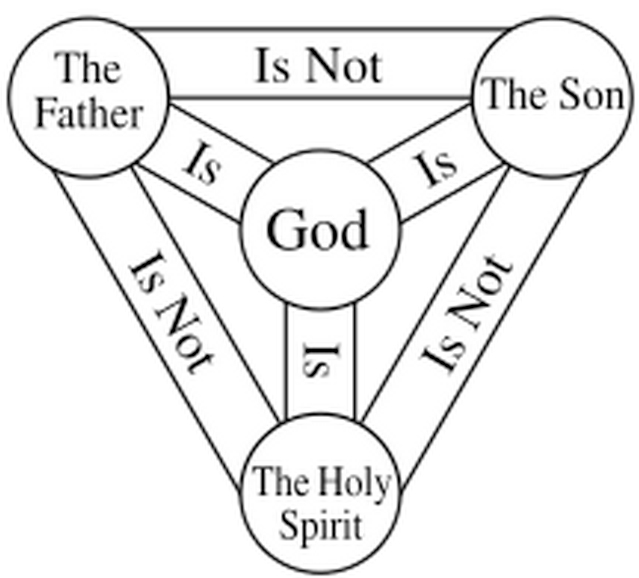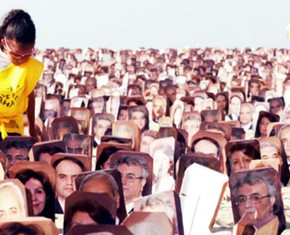The views expressed in our content reflect individual perspectives and do not represent the authoritative views of the Baha'i Faith.
Jesus addressing the Apostles: “But whom say ye that I am?” And Peter answereth and saith unto him, “Thou art the Christ.” – Mark 8:29
Was Jesus God?
Probably the most vexing issue confounding Christian unity is the Christology of Christ. What relationship does the nature and person of Jesus have with the nature and person of God? In other words, was Jesus human or divine, or somehow both human and divine?
For many Christians the question of Jesus’ nature has a simple answer: Jesus was God incarnate. Thus, logically, such a doctrine makes Christianity superior to any religion founded by mere mortals, prophets or teachers. This widespread claim of exclusivity and finality characterizes the Christian doctrine of Incarnation.
At the Council of Chalcedon in 451 A.D., the prevailing Christian theology claimed that Christ possessed two natures, ‘one human and one divine.’ This doctrine, called hypostatic union, still exists today among eastern Orthodox, Roman Catholic and many Protestant Christians.
 Later, another attempt emerged to reconcile the nature of Jesus–the doctrine of the Trinity. The Trinity, as expressed in the graphic below, explains that God exists in three persons: the Father, the Son and the Holy Spirit. Although the word “trinity” appears nowhere in the Bible, the concept perhaps most directly derives from Matthew 28:19: “Go therefore and make disciples of all nations, baptizing them in the name of the Father and of the Son and of the Holy Spirit.”
Later, another attempt emerged to reconcile the nature of Jesus–the doctrine of the Trinity. The Trinity, as expressed in the graphic below, explains that God exists in three persons: the Father, the Son and the Holy Spirit. Although the word “trinity” appears nowhere in the Bible, the concept perhaps most directly derives from Matthew 28:19: “Go therefore and make disciples of all nations, baptizing them in the name of the Father and of the Son and of the Holy Spirit.”
Christian teachers sometimes explain that the Trinity resembles an egg. The egg—like the Trinity—has three parts: a shell, the white and the yolk. Another argues that one man can be a father, a son and an uncle, all at the same time; and thus be three in one.
Another approach is to argue that no analogy—however ingenious—can explain God; therefore one should stop trying to understand and simply believe. The Trinity is a mystery, and as such is incomprehensible.
The issue of the Christology of Christ is further confounded by the apparent contradictory verses uttered by Christ in the New Testament.
Jesus appears to argue that he is God. For example:
…and yet hast thou not known me, Philip? he that hath seen me hath seen the Father; and how sayest thou then, Shew us the Father? – John 14:9, 10, 11
I and my Father are one. – John 10:30
Jesus appears to argue that he is not God:
Why do you call me good?” Jesus answered. “No one is good–except God alone. – Mark 10:18; Luke 18:19; Matt 19:17
No one has seen God at any time – John 1:18
“For whoever does the will of My Father who is in heaven, he is My brother. – Matt 12:50
I am the way, the truth, and the life: no man cometh unto the Father, but by me. – John 14:16
Logic contains the law of non-contradiction. For example, something cannot be both true and untrue simultaneously. A swan may be all white or all black, but not all white and all black simultaneously.
In Matthew 24:36, Christ is questioned about his return. He responds, “But concerning that day and hour no one knows, not even the angels of heaven, nor the Son, but the Father only.”
According to the law of non-contradiction, Jesus cannot be the All-Knowing God, because Jesus cannot both know and not know something simultaneously.
The Baha’i revelation offers examples that reconcile these apparent contradictions in Bible verses. Abdu’l-Baha addressed the issue of the Trinity using the analogy of the Sun (God), the Mirror (Jesus) and the Rays of the Sun (the Holy Spirit):
All that is mentioned regarding the manifestation and revelation of God pertains to the effulgence of His light and not to a descent into the degrees of existence.
God is pure perfection and the creation is absolute imperfection. For God to descend into the degrees of existence would be the greatest of imperfections; rather, His manifestation, dawning, and effulgence are even as the appearance of the sun in a clear, bright and polished mirror.
…The Perfect Man, however, is even as a clear mirror in which the Sun of Truth is revealed and manifested in the fullness of its attributes and perfections. Thus the Reality of Christ was a bright and polished mirror of the greatest purity and clarity. The Sun of Truth, the Essence of the Divinity, appeared in that mirror and manifested its light and heat therein; yet it did not descend from the heights of holiness and the heaven of sanctity to reside within it. No, it continues to abide in its loftiness and sublimity, but has been revealed and manifested in the mirror in all its beauty and perfection.
Now if we say that we have beheld the Sun in two mirrors—one Christ and the other the Holy Spirit—or, in other words, that we have seen three Suns–one in heaven and two upon the earth—we would be speaking the truth. And if we were to say that there is only one Sun, that it is absolute singleness, and that it has no peer or partner, we would again be speaking the truth.
The purport of our words is that the Reality of Christ was a clear mirror wherein the Sun of Truth—that is, the divine Essence—appeared and shone forth with infinite perfections and attributes. It is not that the Sun, which is the Essence of the Divinity, was ever divided and multiplied—for it remains one—but it became manifest in the mirror. That is why Christ said, “The Father is in the Son,” meaning that that Sun is manifest and visible in this mirror. – Some Answered Questions, (newly revised edition), pp. 127-129.
This Baha’i analogy uses the concept of manifestation, not incarnation. This explanation opens the way to understanding that the Founders of the world’s living religions all come from the same God and teach the same Faith.
















Comments
Sign in or create an account
Continue with Googleor